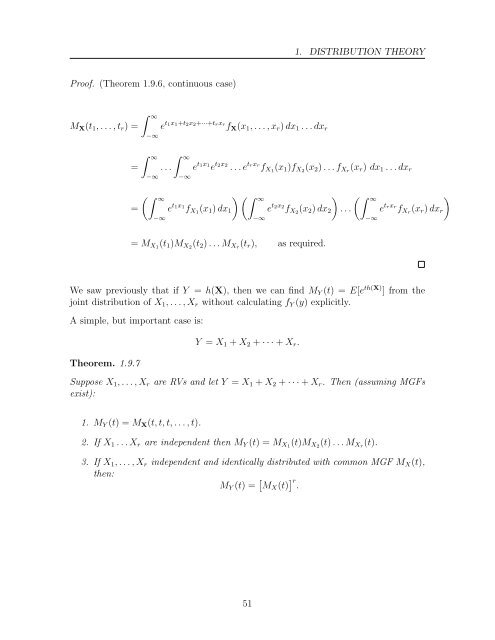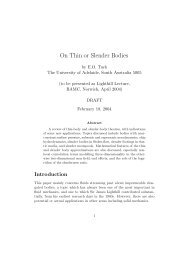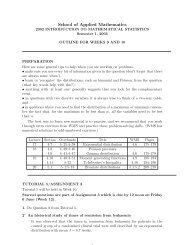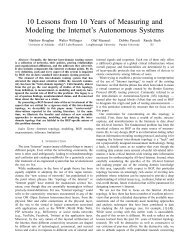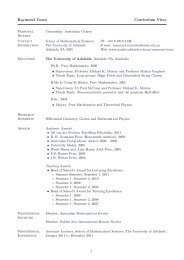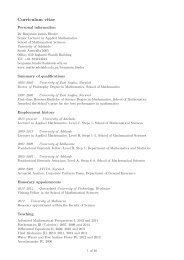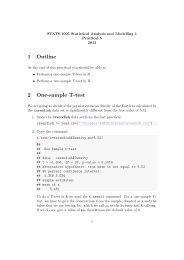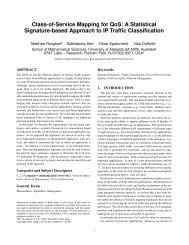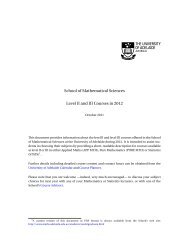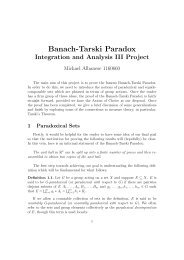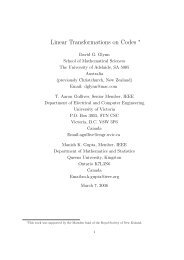PDF of Lecture Notes - School of Mathematical Sciences
PDF of Lecture Notes - School of Mathematical Sciences
PDF of Lecture Notes - School of Mathematical Sciences
You also want an ePaper? Increase the reach of your titles
YUMPU automatically turns print PDFs into web optimized ePapers that Google loves.
1. DISTRIBUTION THEORY<br />
Pro<strong>of</strong>. (Theorem 1.9.6, continuous case)<br />
M X (t 1 , . . . , t r ) =<br />
=<br />
∫ ∞<br />
−∞<br />
∫ ∞<br />
−∞<br />
e t 1x 1 +t 2 x 2 +···+t rx r<br />
f X (x 1 , . . . , x r ) dx 1 . . . dx r<br />
∫ ∞<br />
. . . e t 1x 1<br />
e t 2x 2<br />
. . . e trxr f X1 (x 1 )f X2 (x 2 ) . . . f Xr (x r ) dx 1 . . . dx r<br />
−∞<br />
(∫ ∞<br />
) (∫ ∞<br />
) (∫ ∞<br />
)<br />
= e t 1x 1<br />
f X1 (x 1 ) dx 1 e t 2x 2<br />
f X2 (x 2 ) dx 2 . . . e trxr f Xr (x r ) dx r<br />
−∞<br />
−∞<br />
−∞<br />
= M X1 (t 1 )M X2 (t 2 ) . . . M Xr (t r ), as required.<br />
We saw previously that if Y = h(X), then we can find M Y (t) = E[e th(X) ] from the<br />
joint distribution <strong>of</strong> X 1 , . . . , X r without calculating f Y (y) explicitly.<br />
A simple, but important case is:<br />
Theorem. 1.9.7<br />
Y = X 1 + X 2 + · · · + X r .<br />
Suppose X 1 , . . . , X r are RVs and let Y = X 1 + X 2 + · · · + X r . Then (assuming MGFs<br />
exist):<br />
1. M Y (t) = M X (t, t, t, . . . , t).<br />
2. If X 1 . . . X r are independent then M Y (t) = M X1 (t)M X2 (t) . . . M Xr (t).<br />
3. If X 1 , . . . , X r independent and identically distributed with common MGF M X (t),<br />
then:<br />
M Y (t) = [ M X (t) ] r<br />
.<br />
51


